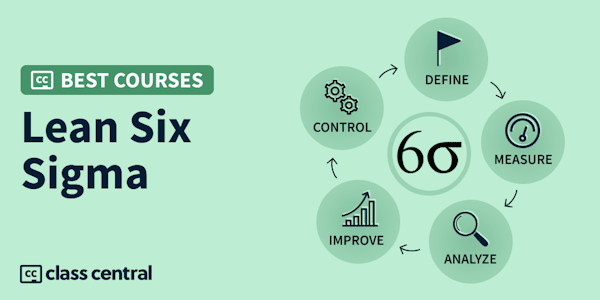Lean Six Sigma Yellow belt provides individuals with an introduction to the Lean and Six Sigma process improvement methodologies. This Six Sigma Yellow Belt course will equip the individual to participate on a process improvement team, identify non-value add, waste and variance in the workplace, implement small scale solutions, and utilize basic Lean Six Sigma principles. This is a beginner level course-there are no pre-requisites, experience requirements or required books for this course.
What is Six Sigma Yellow Belt?
Six Sigma is essentially a set of techniques and tools that are used to help organizations improve production procedures and reduce defects to ensure quality. Certification in Six Sigma proves that professionals have the skills to identify risks, errors, or defects in business processes and to remove them.
Six Sigma certification is broken down into various levels. These levels, or belts, are white, yellow, green, black, and master black. The Six Sigma Yellow Belt certification assumes you know the basics of Six Sigma and how and where it should be applied.
What is Involved in this Six Sigma Yellow Belt Online Course?
Our Lean Six Sigma Yellow Belt online course for Lean and Six Sigma will provide you with the foundational knowledge of these tools and their methodologies. You will learn how to work as part of a process improvement team, which involves identifying non-value add, waste, and variances in work settings, and implementing solutions utilizing basic Lean Six Sigma principles.
Cybrary’s Six Sigma Yellow Belt training doesn’t require that you have any specific experience and there are no prerequisites. The course is a total of 9 hours of clock time, and you will receive a Certificate of Completion upon finishing the training.
What Are the Benefits of Having a Six Sigma Yellow Belt Certification?
Learning the methodologies associated with Six Sigma can impact your career positively. Being able to include Six Sigma certifications on your resume demonstrates that you are dedicated to continued learning, improving your business acumen, analytical abilities, and productivity – all of which are attributes that potential employers look for.
Additionally, there are other reasons that seeking your Six Sigma certification will benefit you, your organization, and your career:
- It ensures compliance – Because Six Sigma demands high standards, many organizations use it when evaluating accounts or products. Individuals who are Six Sigma certified are a great benefit to their companies because they can help maintain profitability by complying with those high standards.
- It’s valued in many industries – Six Sigma is not an industry-specific methodology. The Six Sigma tools and techniques are used in many industries including banking and financial services, electronics, aerospace, IT, telecom, human resources, marketing, and many others. Thus, the possibilities for employment are virtually unlimited.
- It helps advance careers – Any of the Six Sigma certifications, including the Yellow Belt, demonstrate that you understand the fundamentals of Six Sigma and how and where to apply its methodologies. These skills will help you become a more appealing candidate for promotions and advancement.
- It pays well – When you have worked through all the certification for Six Sigma, you will have a higher earning potential than your uncertified counterparts. Six Sigma certified professionals commonly earn over $100,000 annual salaries.
How Hard is the Six Sigma Yellow Belt Exam?
Many of the professionals who have taken the Six Sigma Yellow Belt certification exam have found it to be fairly straightforward when they have taken a training course to prepare for it. While it’s not a requirement, obtaining Lean Six Sigma Yellow Belt training prior to sitting the exam will certainly improve your performance on the test.
The certification test contains 60 questions (some multiple choice and some true or false) that cover all sections of the IASSC Lean Six Sigma Body of Knowledge that pertain to the Yellow Belt. The test is closed book and has a 2-hour time limit. To pass the exam and receive certification, you must have a score of at least 230 points out of a possible 300 points. The exam is currently priced at $195.

